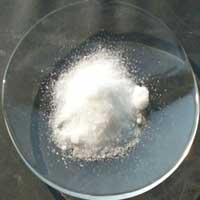
A study released this year warns about the effects of human exposure to a set of related chemicals. Alzheimer’s expert Professor Suzanne de la Monte at Rhode Island Hospital has identified a link between nitrates, nitrites and nitrosamines, and increased deaths from Alzheimer’s, Type 2 diabetes and Parkinson’s Disease, all of which have been undergoing an exponential increase over the last few decades. The findings were published in the July 2009 Journal of Alzheimer’s Disease.
In recent decades, Western populations have been exposed to steadily increasing quantities of nitrates through various pathways. Much of the nitrates in artificial fertilisers are taken up by crops, and the remainder can enter the watertable where they may contaminate water used for drinking and crop production. Since 1985, Australian nitrogenous fertiliser consumption has more than tripled.
Sodium nitrate and sodium nitrite are also used as preservatives in some processed foods, particularly ground beef, bacon, cured meats, cheese products and beer. In the case of cured meats, they work as preservatives, and help the product to maintain its red colour.
The problem with nitrates and nitrites is that when they encounter a protein, they are liable to form nitrosamines. As a rule, nitrosamines are more likely to be created in acid conditions such as those found in the stomach, or by high-temperature types of cooking such as frying. Some studies have linked nitrite use to human stomach cancer.
Overall, the easiest way to minimise nitrate intake from fertilisers and to avoid both these questionable preservatives is to eat organic food; under organic standards synthetic fertilisers and many additives are banned.
Another exposure route for nitrosamines is via cosmetics, where they are often found as an impurity rather than an ingredient. They occur when diethanolamine (DEA), triethanolamine (TEA), or Monoethanolamine (MEA) are used in the same products as certain preservatives that create nitrates when they break down. Nitrosamines have been banned from cosmetics sold in the EU and Canada, but not in Australia.
De la Monte proposes that cellular alterations may be the cause of the three diseases identified in her study. She believes that if her conclusions are correct, exposure could be minimised through the elimination of nitrates and nitrites in food processing, preservation and agriculture, and detoxification of food and water before human consumption.










































